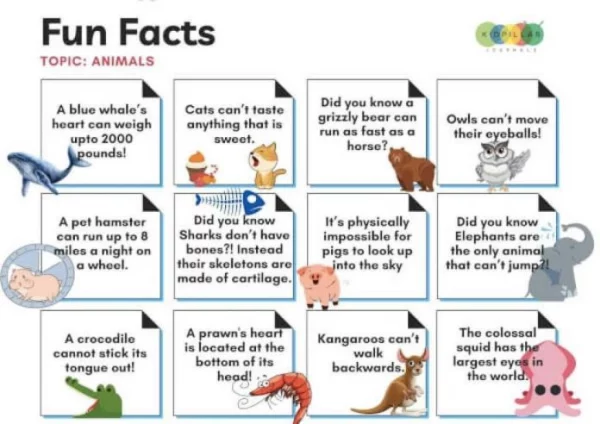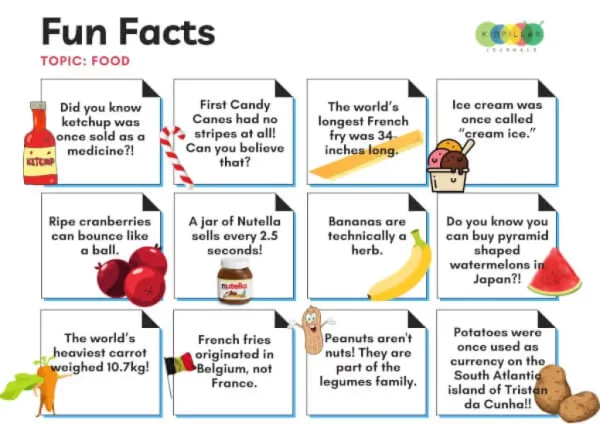Raising a 3-year-old child is a crucial stage in their overall development. To stimulate the child’s curiosity and exploration, interesting facts about animals and food can help them learn while having fun. Providing simple yet captivating facts can make learning easier and also help the child form positive habits in exploring the world around them.
Children at the age of 3 are often very curious and fascinated by the creatures around them. One of the fascinating facts that will surprise children is “Bears can run as fast as a horse.” This might surprise them, as they often think bears only walk slowly. Learning about the speed of bears will help children form a clearer image of animals they see in books or through cartoons. Additionally, “Giraffes can use their two-foot-long tongues to clean their ears.” is a fact that children may find both interesting and humorous when they try to imagine it.
In addition, sharing facts about animals with children will expand their knowledge of the animal world around them. “Baby sharks are called ‘pups’, just like baby bats!” – this fact helps children connect the world of marine animals with more familiar creatures like bats, thus helping them better understand the lives of underwater beings.

Besides animals, children also love fascinating facts about the food around them. Did you know that “Bananas grow hanging upside down on trees”? This helps children visualize how plants grow and become familiar with different forms of nature. Simple facts like “Ice cream is made from whipped milk and sugar” or “Bread starts as a ball of wet dough and is baked in the oven” help children understand the food preparation process, while also sparking their creativity when imagining cooking activities at home.
Learning through such fascinating facts will not only help children broaden their knowledge but also nurture their curiosity and creativity. These simple yet surprising pieces of information can be used in daily conversations to encourage children’s learning. For example, when talking about animals, you can encourage children to search for images or videos of the animals they’ve just learned about, thereby enriching their learning experience.

Combining basic scientific knowledge with fun activities also helps children easily remember and apply it to real-life situations. By sharing easy-to-understand and relatable information, parents can not only help children develop intellectually but also nurture a lifelong passion for learning.


HPX24h > Parenting Tips > Fun Facts for 3-Year-Olds: Exploring the World of Animals and New Foods
Top Reads from This Category
Parenting Tips
Tips for Helping Preschoolers Develop Healthy Sleep Habits
Parenting Tips
Why You Can’t Force Your Child to Live the Way You Do?
Parenting Tips
How to Prevent a 2-Year-Old from Throwing Things?
Parenting Tips
Why Do Preschoolers Have the Habit of Nose Picking?
Parenting Tips
Talking To Children About Sexuality: How To Make It Easier?
Parenting Tips
Why Your Child Might Be Coughing Disruptively During Sleep?
Parenting Tips
Discover How Japan’s Education System Creates Self-Disciplined, Responsible Students Without the Need for Pressure
Discover New Topics
Science
The Science Behind CRISPR: Can Animal Genetic Modification Lead Us to a Better Future?
Fitness
Postpartum Fitness: Secrets to Maintaining an Active Routine for a Quick Recovery
Science
Discovering Enzymes That Stimulate Hair Regrowth: A New Opportunity in Hair Loss Treatment
Health
Fruits That Can Spike Blood Sugar Levels: Be Cautious
Science
Implanting an NFC Chip into the Hand – When Technology and Humans Merge
Science
AI Can Make Life Easier, But Is It Harming Your Ability to Think Critically?
Health
Daily Habits to Naturally Manage Blood Pressure Without Medication
Health
Chemicals in Cosmetics That Could Increase Breast Cancer Risk – Did You Know?
Science
Stem Cells and Gut Cultures: Unlocking New Possibilities for Treating Digestive Disorders
Healthy Eating
Sugar-Free Diet: Benefits, Risks, and What You Need to Know
Fitness
Effective Training Tips to Enhance Muscular Endurance
Science
Robot Walker: A Breakthrough in Helping Stroke Survivors Regain Natural Walking
Science
New Artificial Kidney via Nanotechnology: A Revolutionary Alternative to Dialysis